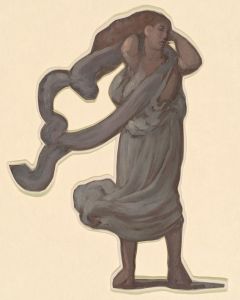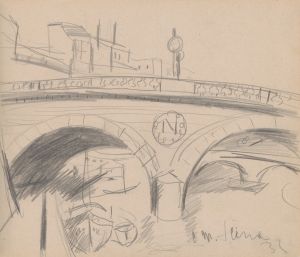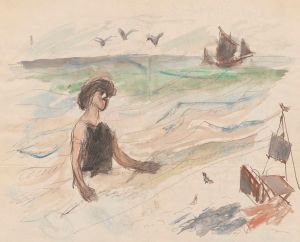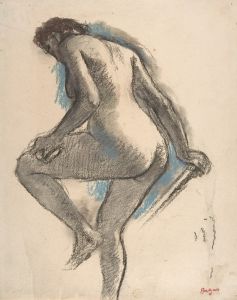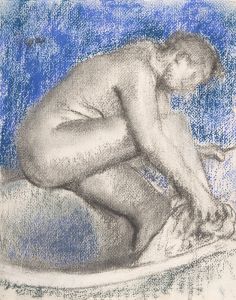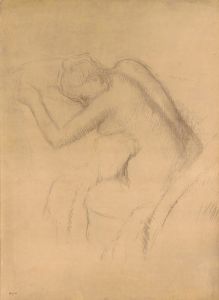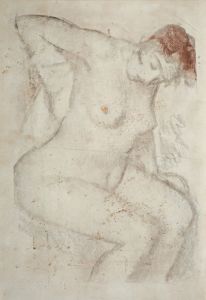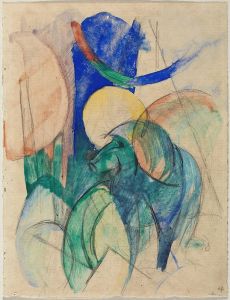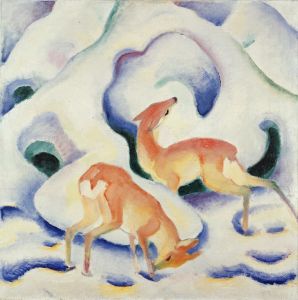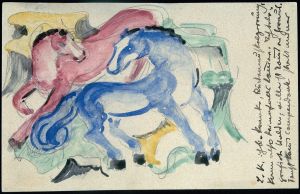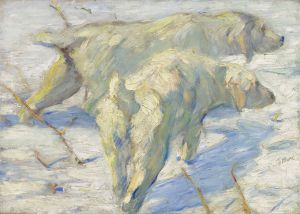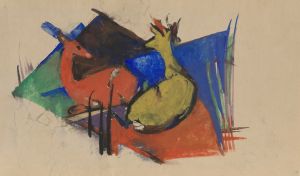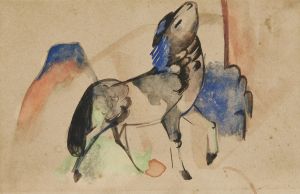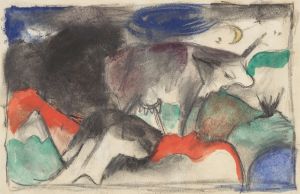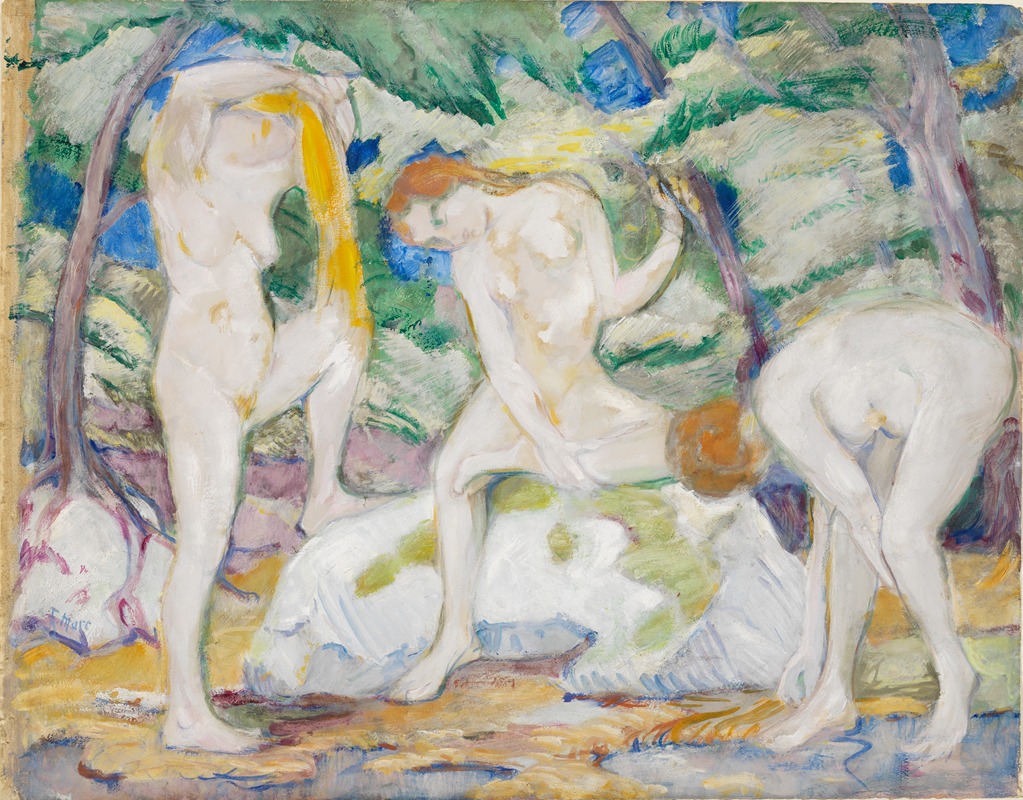
Badende Frauen
A hand-painted replica of Franz Marc’s masterpiece Badende Frauen, meticulously crafted by professional artists to capture the true essence of the original. Each piece is created with museum-quality canvas and rare mineral pigments, carefully painted by experienced artists with delicate brushstrokes and rich, layered colors to perfectly recreate the texture of the original artwork. Unlike machine-printed reproductions, this hand-painted version brings the painting to life, infused with the artist’s emotions and skill in every stroke. Whether for personal collection or home decoration, it instantly elevates the artistic atmosphere of any space.
Franz Marc was a prominent German painter and printmaker, a key figure in the German Expressionist movement and a founding member of Der Blaue Reiter (The Blue Rider), an influential group of artists. His work is known for its vivid use of color and emotional intensity, often focusing on themes of nature and animals. One of his lesser-known works is "Badende Frauen" (Bathing Women), which reflects his unique artistic style and thematic interests.
"Badende Frauen" was created during a period when Marc was deeply engaged with the ideas of spirituality and the natural world. While much of his work centers on animals, this painting is an exploration of the human form, specifically women, in a natural setting. This theme aligns with the broader interests of the Expressionist movement, which sought to convey emotional experiences rather than physical reality.
The painting depicts women bathing, a subject that has been explored by many artists throughout history. However, Marc's approach is distinct due to his use of color and form. His palette is typically vibrant, employing bold and contrasting colors that evoke a sense of harmony and vitality. This use of color is not merely aesthetic but is intended to convey deeper emotional and spiritual truths, a hallmark of Marc's work.
Marc's style in "Badende Frauen" is characterized by simplified forms and dynamic compositions. The figures in the painting are stylized, with an emphasis on flowing lines and organic shapes that integrate them into the surrounding landscape. This integration reflects Marc's belief in the unity of humans and nature, a theme that resonates throughout his oeuvre.
The painting also reflects Marc's interest in the symbolic use of color. He often attributed specific meanings to colors; for example, blue was associated with spirituality and masculinity, yellow with femininity and joy, and red with violence and conflict. In "Badende Frauen," the interplay of these colors may suggest a balance between these forces, though the exact interpretation can vary.
Franz Marc's work, including "Badende Frauen," was influenced by various artistic movements and philosophies. He was inspired by the works of Vincent van Gogh and Paul Gauguin, as well as by the spiritual ideas of Wassily Kandinsky, his fellow member of Der Blaue Reiter. Marc's art was also shaped by his interest in Eastern philosophies and theosophy, which emphasized the interconnectedness of all life.
"Badende Frauen" is a testament to Marc's innovative approach to art, combining elements of abstraction with a deep emotional resonance. His work continues to be celebrated for its contribution to modern art and its exploration of the human condition in relation to the natural world. Despite his untimely death in World War I, Franz Marc's legacy endures, and his paintings remain influential in the study of Expressionism and early 20th-century art.





